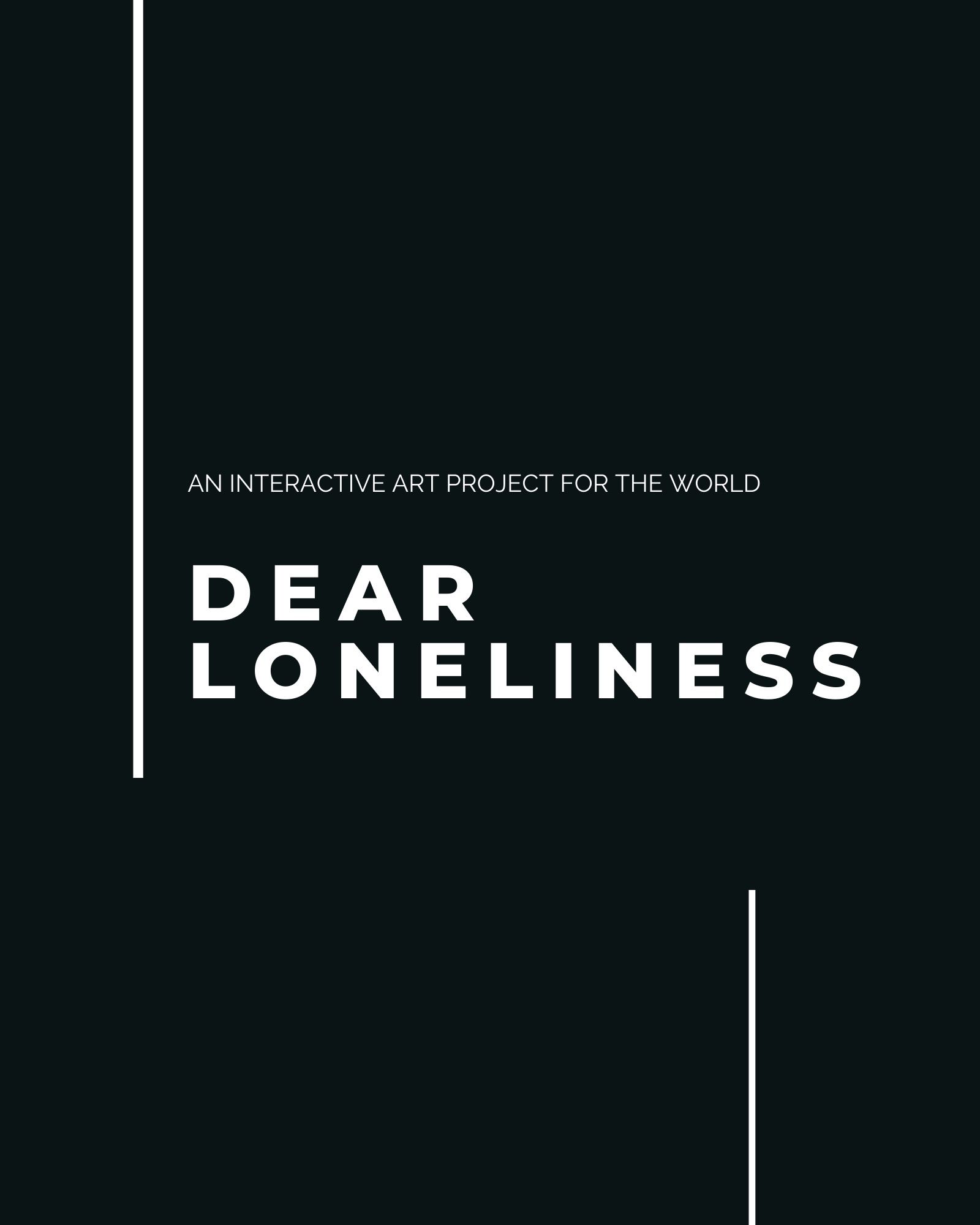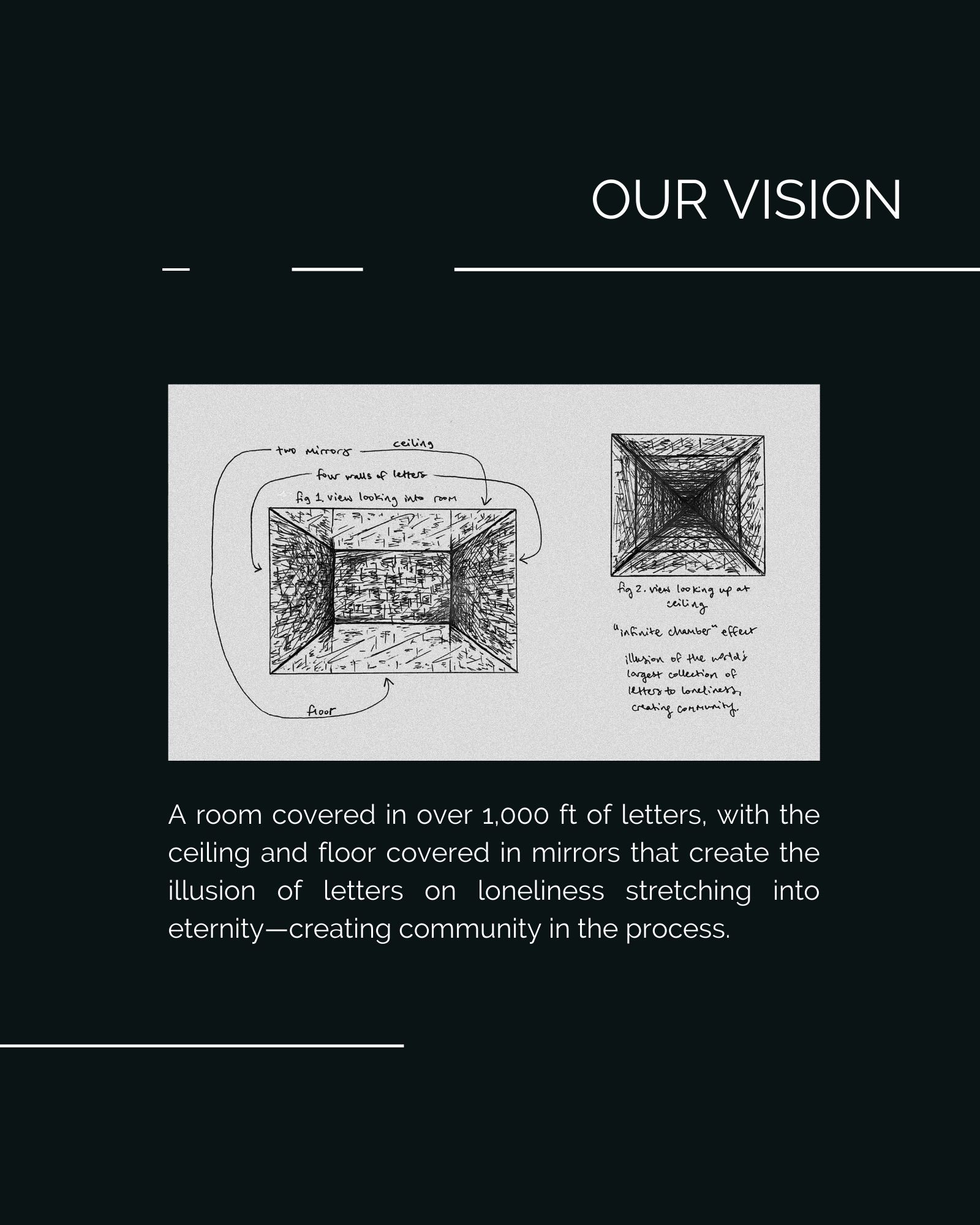Dear Loneliness
Dear Loneliness is a large-scale collaborative art project that seeks to write the longest letter in the world as a memorial to 2020, the COVID-19 era, and the racial injustices that have dominated this year.- Time
- –

Over half of Americans say their mental health is suffering amid the COVID-19 outbreak, exacerbating the fact that one in five already reported feeling lonely before it. For BIPOC communities, the toll of both physical and psychological isolation has only been greater.
Created by by Jessica Lao, Sarah Lao, and Carissa Chen, “Dear Loneliness” is a large-scale collaborative art project that seeks to write the longest letter in the world as a memorial to 2020, the COVID-19 era, and the racial injustices that have dominated this year. Composed of thousands of letters on loneliness from around the world, it seeks to connect individuals through art via both its virtual gallery and forthcoming physical exhibits. With author permission, these letters will be archived as a record of thousands of peoples’ lived experiences during a year of injustice.
Though the physical version of the exhibit will depend on quarantine circumstances, the current world record for the longest letter is 290 meters—about three football fields—and early designs feature a room covered in over 1,000 feet of these handwritten and scanned letters. Whether in VR or in person, mirrors on the ceiling and floor would reflect to create the illusion of letters on loneliness stretching into eternity, creating community in the process; stepping inside would feel like entering the letter itself as a snapshot of this moment in time. A physical version of the room would allow visitors the option to stick their own letters to the walls, in a truly living exhibit.
While submissions will remain open through the end of 2020, several insights have already begun to emerge from analysis of the letters’ content. For instance, some of the most frequently occurring words after “lonely” are “time” and “didn’t,” with more in-depth parsing to follow in 2021. Still, we do not expect either the letters’ content or author identities to be very legible in the physical exhibit. Thus, though we hope their message of unity transcends the everyday symbolism of language, we plan to print them into an additional artist book (format pending) to preserve as a time capsule.
Paramount in our mission is the question of how to remember a time of strife without glorifying it—we hope that the solemn yet understated nature of this exhibit will highlight the thousands of individuals that make it up, in addition to the weight of loneliness itself. Further, as much as we support policy solutions to loneliness (perhaps something like the U.K.’s Minister of Loneliness), we believe that the power of “Dear Loneliness” lies in the cultural shift that an art movement can harness to complement the terrific work of nonprofit groups in this time.
